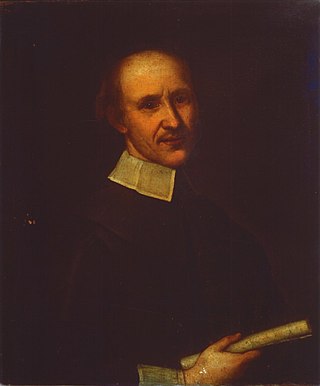
Giovanni BattistaPiranesi was an Italian classical archaeologist, architect, and artist, famous for his etchings of Rome and of fictitious and atmospheric "prisons". He was the father of Francesco Piranesi, Laura Piranesi and Pietro Piranesi.

Johann Joachim Winckelmann was a German art historian and archaeologist. He was a pioneering Hellenist who first articulated the differences between Greek, Greco-Roman and Roman art. "The prophet and founding hero of modern archaeology", Winckelmann was one of the founders of scientific archaeology and first applied the categories of style on a large, systematic basis to the history of art. Many consider him the father of the discipline of art history. He was one of the first to separate Greek Art into periods, and time classifications.

Joseph Hergenröther was a German Church historian and canonist, and the first Cardinal-Prefect of the Vatican Archive.

Giovanni Legrenzi was an Italian composer of opera, vocal and instrumental music, and organist, of the Baroque era. He was one of the most prominent composers in Venice in the late 17th century, and extremely influential in the development of late Baroque idioms across northern Italy.

Francesco Maria Sforza Pallavicino or Pallavicini, was an Italian cardinal, philosopher, theologian, literary theorist, and church historian.
Roman academies refers to associations of learned individuals and not institutes for instruction.

Giovanni Battista (Carlo) de Rossi was an Italian archaeologist, famous even outside his field for rediscovering early Christian catacombs.
Antonio Bosio was a Maltese scholar, the first systematic explorer of subterranean Rome, author of Roma Sotterranea and first urban spelunker.

Annius of Viterbo was an Italian Dominican friar, scholar, and historian, born Giovanni Nanni in Viterbo. He is now remembered for his fabrications.
Giuseppe Catalani (1698-1764), also known as Catalano or Catalanus, was a Roman Catholic liturgist of the eighteenth century, a member of the Hieronymite Oratory of San Girolamo della Carità.

Giovanni Pietro Bellori, also known as Giovan Pietro Bellori or Gian Pietro Bellori, was an Italian art theorist, painter and antiquarian, who is best known for his work Lives of the Artists, considered the seventeenth-century equivalent to Vasari's Vite. His Vite de' Pittori, Scultori et Architetti Moderni, published in 1672, was influential in consolidating and promoting the theoretical case for classical idealism in art. As an art historical biographer, he favoured classicising artists rather than Baroque artists to the extent of omitting some of the key artistic figures of 17th-century art altogether.
The decade of the 1690s in archaeology involved some significant events.
Raffaele Garrucci was a historian of Christian art. He was born in Naples to a wealthy family, entered the Society of Jesus at the age of fifteen, and was professed on 19 March 1853. He devoted himself to the study of the Church Fathers, also to Pagan and Christian antiquities; he and Giovanni Battista de Rossi became the principal disciples of Giuseppe Marchi. On his many journeys through Italy, France, Germany, and Spain, he collected much material for his archaeological publications.
Giuseppe Marchi was an Italian Jesuit archæologist who worked on the Catacombs of Rome.
Roman Historical Institutes are collegiate bodies established at Rome, for the purpose of historical research, mostly in the Vatican archives. These have been set both by ecclesiastical authority, and by national governments.
Giacomo Grimaldi was an Italian historian and Vatican archivist, who lived in the early 17th century.

Arnold van Westerhout or Arnoldo van Westerhout was a Flemish printmaker, painter, draughtsman, publisher and printer. He trained in Antwerp but mainly worked abroad, and in particular in Italy. He settled in Rome where he was a prominent printmaker and publisher. The artist is less known for his paintings, which covered religious and genre subjects, than for his work as a printmaker and publisher.

Latium is a 1669 work by the Jesuit scholar Athanasius Kircher. It was dedicated to Pope Clement X and a 1671 edition was published in Amsterdam by Johannes van Waesbergen. The work was the first to discuss the topography, archeology and history of the Lazio region. It was based partly on Kircher's extensive walks in the countryside around Rome, although it included sites that he had probably not visited in person. The work included many illustrations of the contemporary countryside, as well as reconstructions of ancient buildings. It also included an account of his discovery of the ruined sanctuary at Mentorella, which he had already recounted in his 1665 work Historia Eustachio Mariana.
Francesco Valesio (1670–1742) was an Italian diarist and archeologist.












